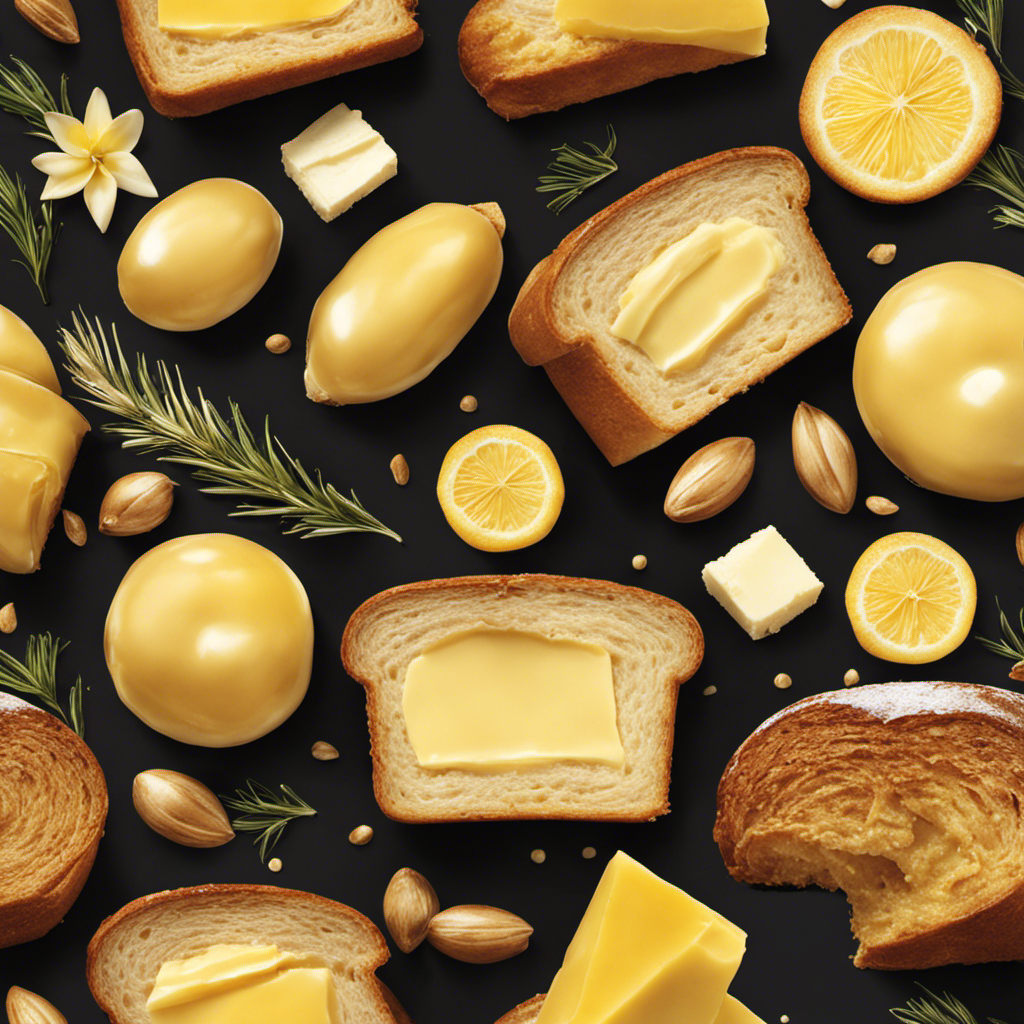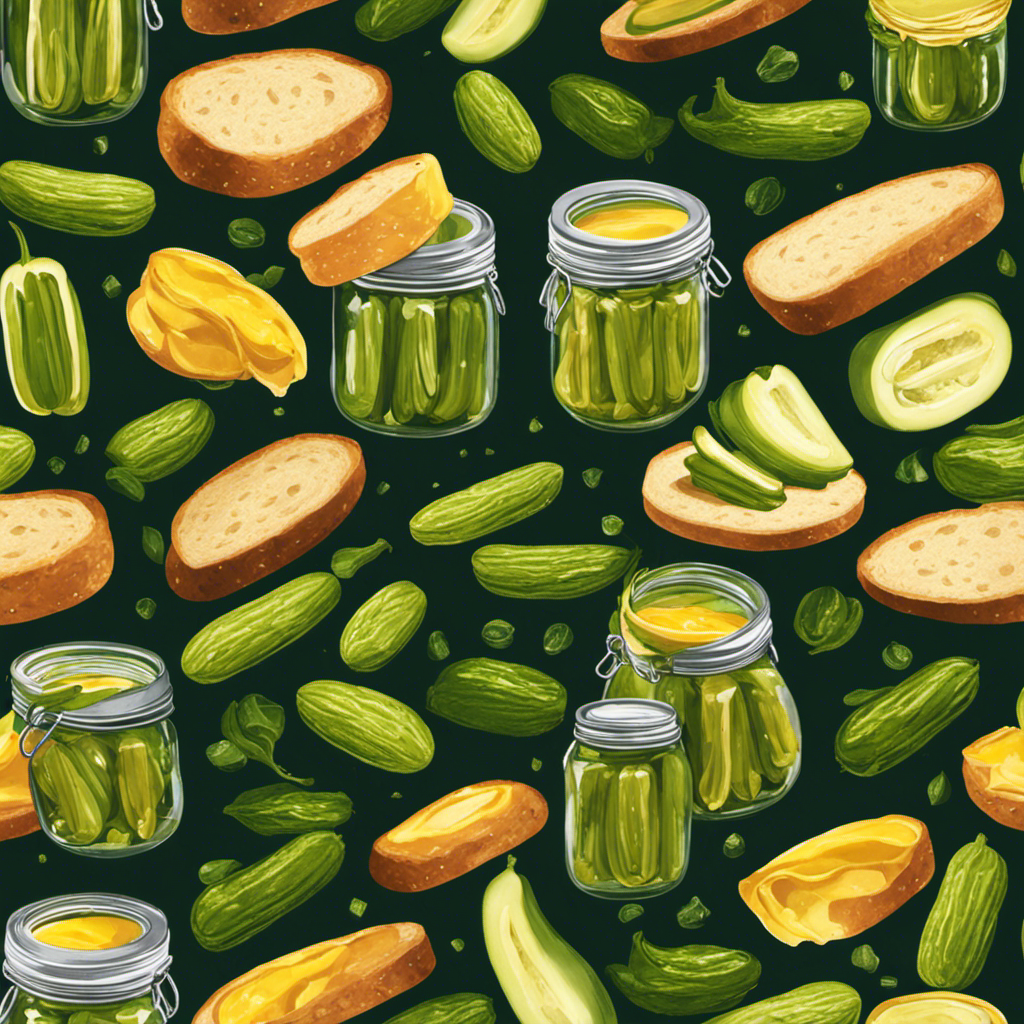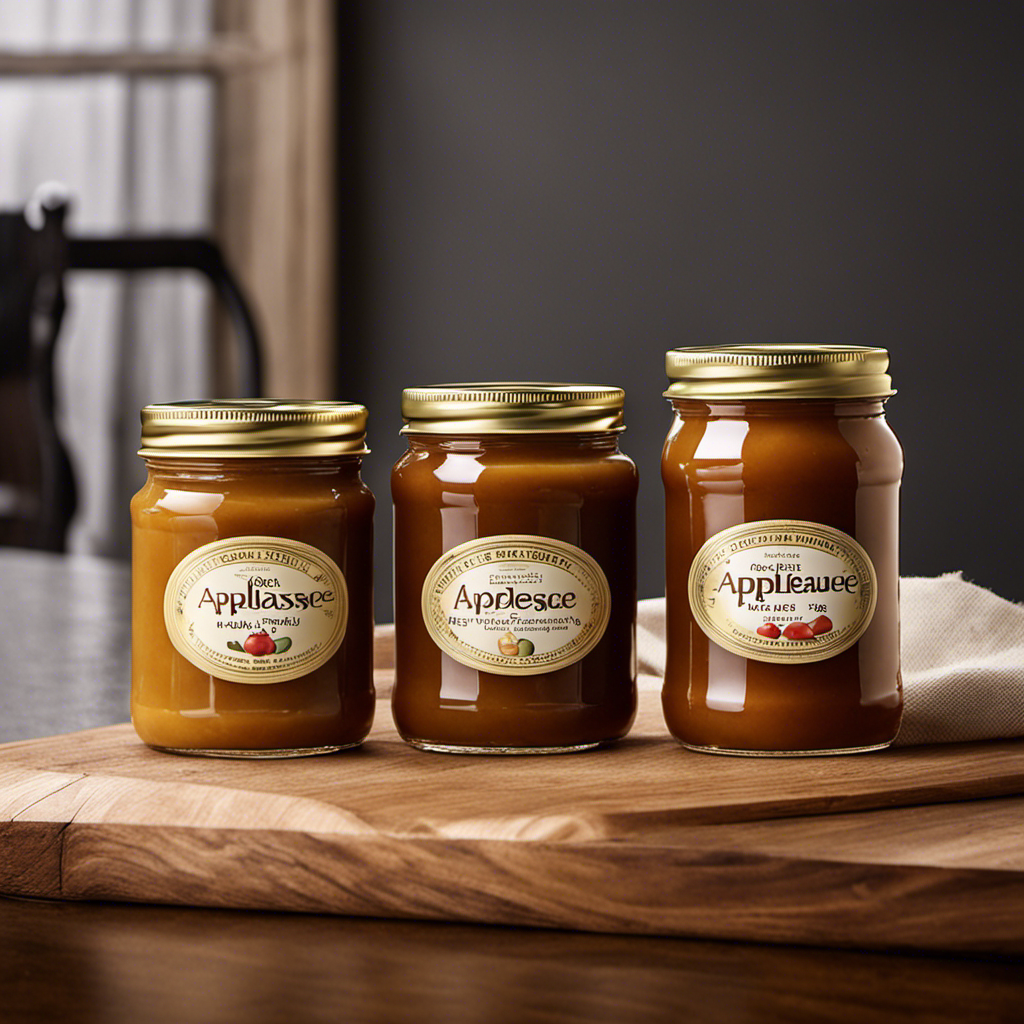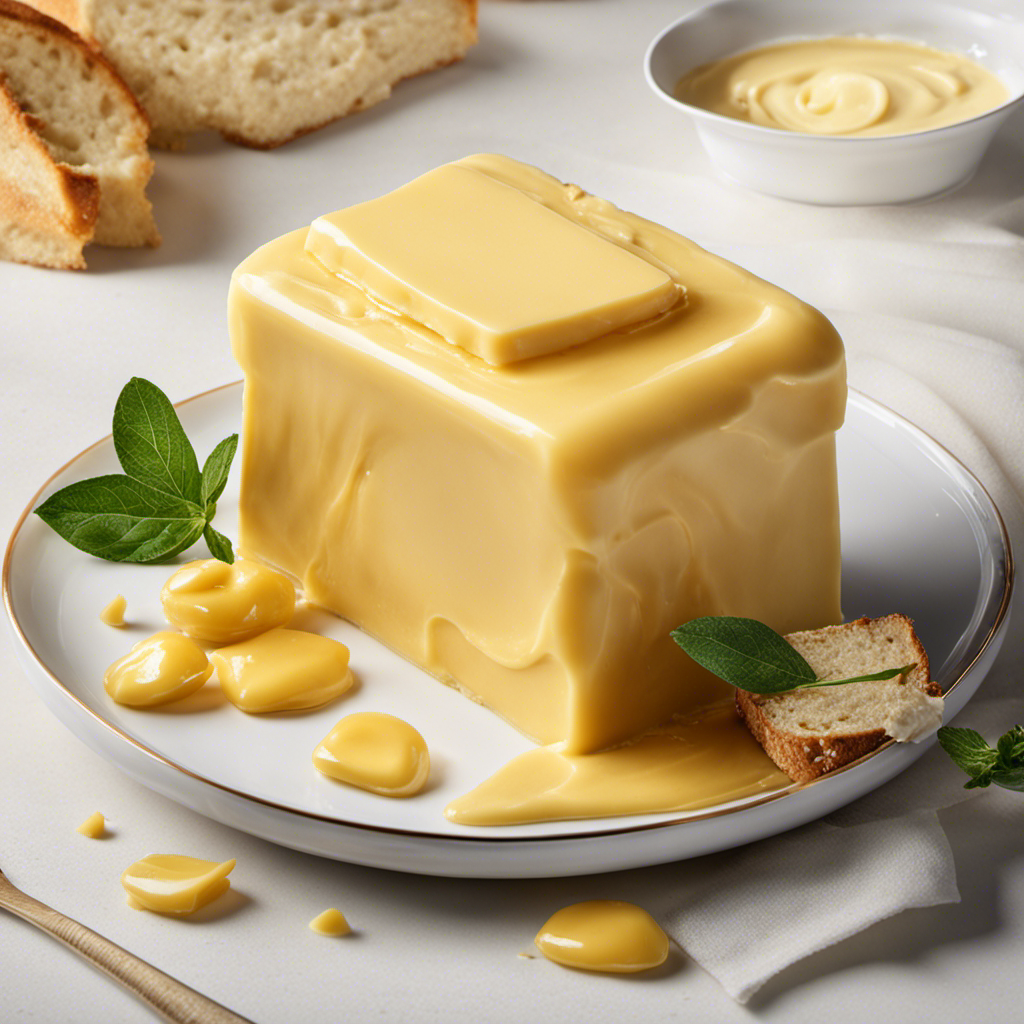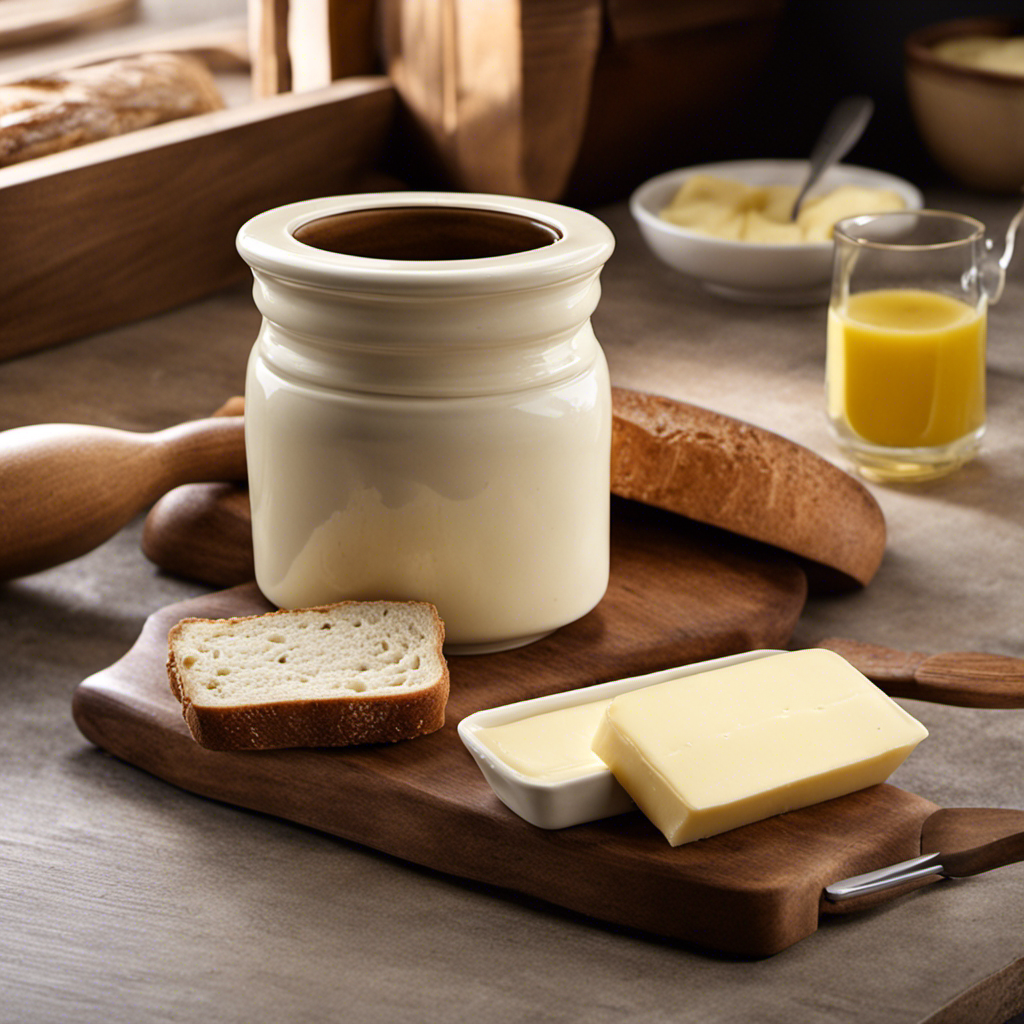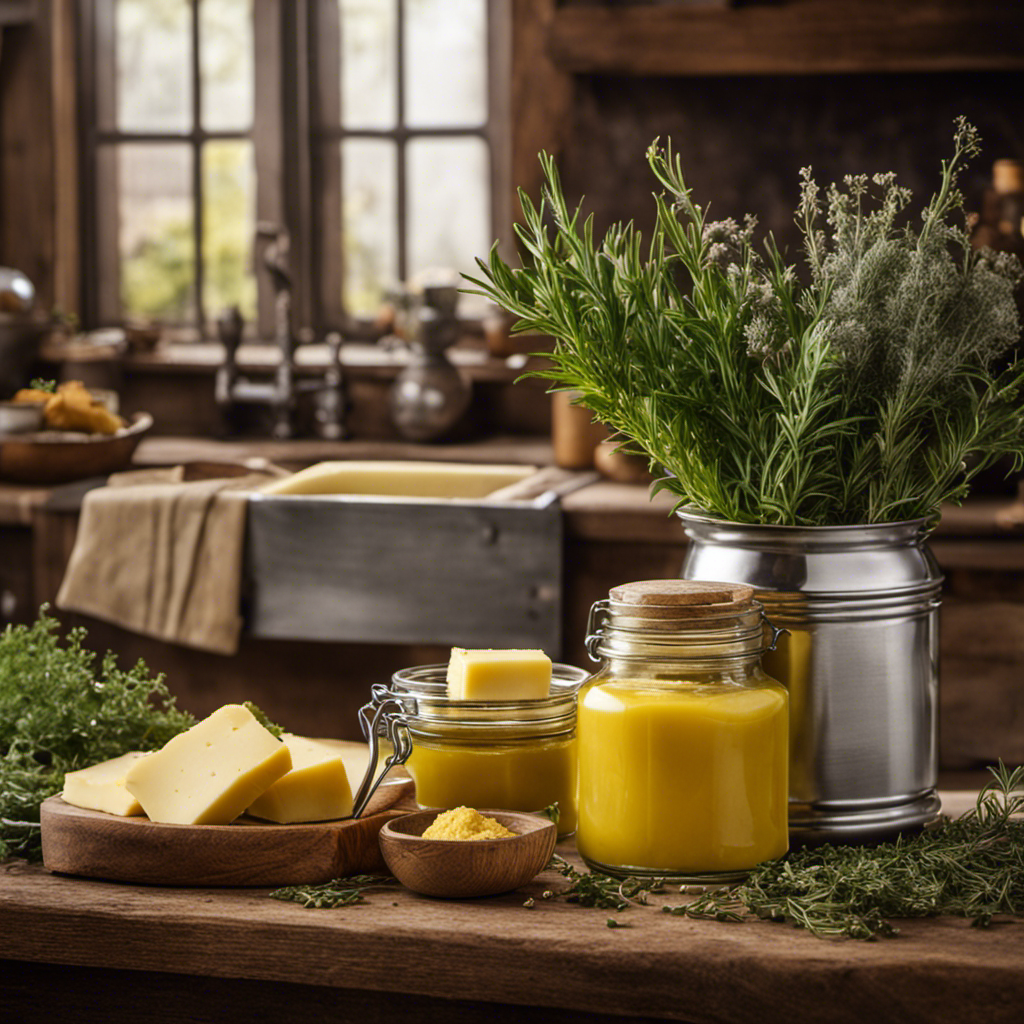When I take a bite of a warm piece of toast covered in butter, I am instantly filled with a feeling of satisfaction. The rich, creamy flavor envelops my taste buds, making me crave another bite.
But why does butter taste so good? In this article, we will delve into the science behind this delectable delight.
From the role of fatty acids to the irresistible aroma and the impact of texture, we will uncover the secrets that make butter truly irresistible.
Join me on this mouthwatering journey to understand why butter is a culinary delight.
Key Takeaways
- Fatty acids in butter, such as short-chain, medium-chain, and long-chain fatty acids, contribute to its tangy, creamy, and savory taste.
- Butter’s aroma, which is released when heated, adds a distinct and irresistible flavor to both sweet and savory dishes.
- The texture of butter, influenced by its melting point and temperature, enhances the overall eating experience.
- Cultural traditions have shaped the unique flavors, textures, and uses of butter in different regions, such as spiced and aromatic Indian butter or creamy and rich French butter.
The Science Behind Butter’s Flavor
Butter’s flavor is a result of the combination of milk fat and other compounds. The chemical composition of butter consists mainly of milk fat, which is made up of triglycerides. These triglycerides contain fatty acids, which play a crucial role in determining the taste of butter.
When butter is heated during cooking, the fatty acids undergo chemical reactions that contribute to its unique flavor. For example, when butter is melted and browned, a process called caramelization occurs, resulting in a rich, nutty taste. Additionally, cooking methods like frying or sautéing can cause the Maillard reaction, which produces a complex and savory flavor in butter.
Understanding the impact of different cooking methods on butter’s flavor is essential in creating delicious dishes.
Transitioning into the next section, let’s explore the role of fatty acids in butter’s taste.
The Role of Fatty Acids in Butter’s Taste
You might be surprised by how the fatty acids in butter contribute to its delicious flavor. The fatty acid composition of butter plays a crucial role in our sensory perception of its taste.
Here are three ways in which fatty acids enhance the flavor of butter:
-
Short-chain fatty acids: These compounds give butter its tangy and slightly sour taste. They stimulate our taste buds, adding a pleasant zing to the overall flavor profile.
-
Medium-chain fatty acids: These contribute to the creamy and smooth mouthfeel of butter. They provide a rich and satisfying texture that enhances the overall taste experience.
-
Long-chain fatty acids: These compounds are responsible for the buttery and savory notes that we associate with this delicious dairy product. They add depth and complexity to the flavor, making it more enjoyable.
Now that we understand how the fatty acids contribute to butter’s taste, let’s explore another aspect of its irresistible allure: its aroma.
Butter’s Aroma: What Makes It Irresistible
Take a moment to savor the mouthwatering aroma of fresh, warm butter melting on a slice of freshly baked bread. Butter’s aroma is what makes it so irresistible in culinary creations. The scent of butter can be described as rich, creamy, and slightly sweet. It has a long history of being used in various culinary dishes, adding a distinct flavor and aroma to both sweet and savory recipes.
The aroma of butter is due to its composition of volatile compounds, which are released when heated. These compounds contribute to the unique scent that we associate with butter.
Exploring the texture of butter and its impact on taste, let’s now delve into the smooth and creamy texture that makes butter such a delight to eat.
Exploring the Texture of Butter and Its Impact on Taste
The creamy texture of butter enhances the overall eating experience. It adds a smoothness that melts in your mouth, making every bite more enjoyable.
The texture of butter is influenced by its melting point and the temperature at which it is consumed. Here are three ways in which temperature affects the taste of butter:
-
Melting point: Butter has a relatively low melting point, around 32-35 degrees Celsius. When butter is heated, it transforms from a solid to a liquid state, becoming more spreadable and easier to incorporate into recipes.
-
Spreadability: When butter is at room temperature, it is softer and more spreadable. This allows it to be easily spread onto bread or toast, creating a satisfying creamy layer.
-
Chilled butter: When butter is chilled, it becomes firmer and more solid. This can provide a different texture and taste experience, especially when used in baking or as a topping on hot dishes like pancakes.
Overall, the temperature at which butter is consumed can greatly impact its taste and texture, making it a versatile ingredient that can be enjoyed in various ways.
The Cultural Influence on Butter’s Deliciousness
When it comes to butter, cultural influences play a significant role in enhancing its deliciousness. Cultural traditions and historical significance have shaped the way butter is prepared, consumed, and enjoyed across different regions of the world. These influences have resulted in a wide variety of butter flavors, textures, and uses that have become integral to specific cuisines. To illustrate the cultural influence on the taste of butter, let’s take a look at the following table:
| Culture | Butter Flavor |
|---|---|
| Indian | Spiced and aromatic |
| French | Creamy and rich |
| Scandinavian | Light and slightly tangy |
| Mediterranean | Olive oil-infused |
| American | Sweet and salted |
| Asian | Sesame or soy-infused |
These cultural traditions and historical practices have not only added depth and complexity to the taste of butter but have also made it an essential ingredient in various traditional dishes around the world.
Frequently Asked Questions
How Many Different Types of Butter Are There?
There are many different types of butter available, each offering its own unique flavor profile. Additionally, there are butter substitutes available for those following vegan diets, ensuring everyone can enjoy the taste of butter.
Can Butter Be Made From Sources Other Than Cows?
Yes, butter can be made from sources other than cows. There are alternative sources of butter such as goats, sheep, and even plants like coconut and avocado. These can be used as substitutes for dairy butter.
What Is the Nutritional Value of Butter?
The nutritional benefits of butter include being a good source of vitamins A, D, and E. However, there are alternatives to butter such as plant-based spreads that offer similar taste and texture with less saturated fat.
How Does Butter Compare to Other Spreads in Terms of Taste?
Butter has a rich, creamy taste that is unmatched by other spreads like margarine. Its cultural significance in cuisines around the world adds to its appeal.
Are There Any Health Benefits Associated With Consuming Butter?
Butter, when consumed in moderation as part of a balanced diet, can contribute to increased levels of LDL cholesterol. However, it also provides essential vitamins and minerals, making it a valuable component of a healthy eating plan.
Conclusion
In conclusion, butter’s delicious taste can be attributed to a combination of factors. The fatty acids in butter contribute to its rich and creamy flavor, while its aroma adds an irresistible dimension to its taste. Furthermore, the smooth texture of butter enhances the overall sensory experience.
Interestingly, a study conducted by the International Dairy Journal found that butter consumption per capita has been steadily increasing over the past decade, with an average of 5.6 kilograms consumed per person annually. This statistic illustrates the widespread appreciation for the delectable taste of butter.
